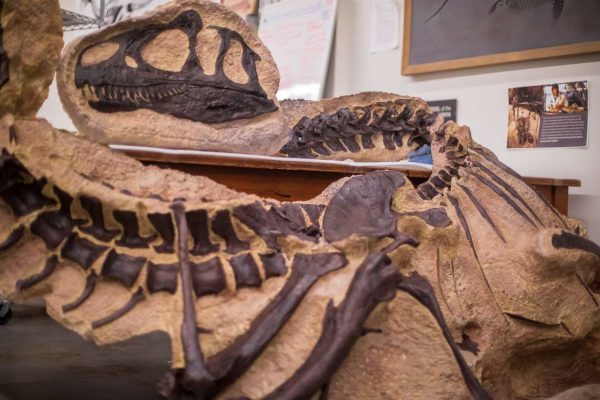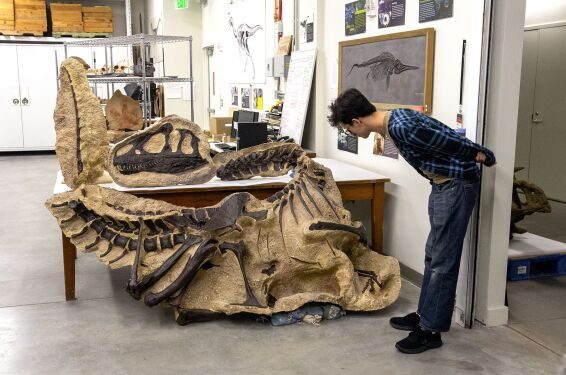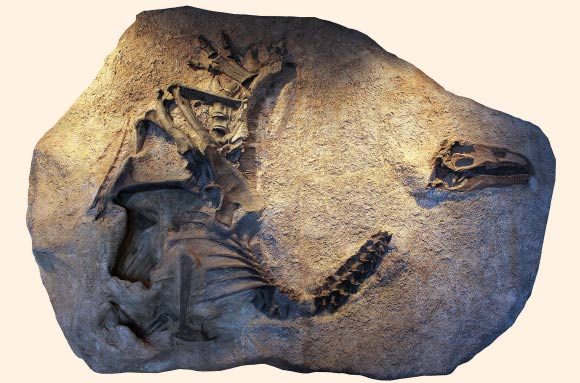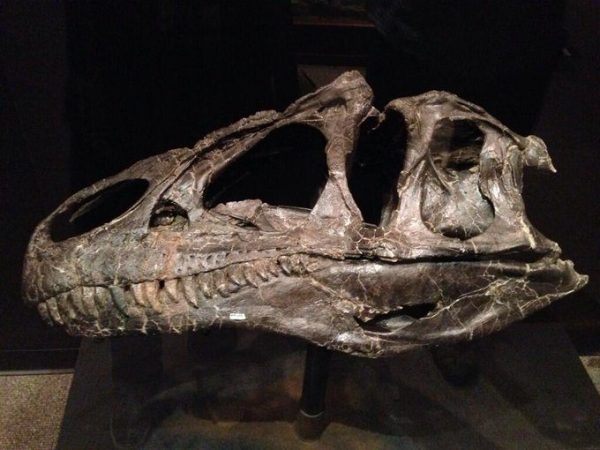In a significant paleontological discovery, a new species of carnivorous theropod dinosaur has been identified from fossilized remains found in northeastern Utah and Wyoming, United States.

Named Allosaurus jimmadseni, this species belonged to the Allosauridae group, characterized by small to large-bodied, two-legged carnivorous dinosaurs that thrived during the Jurassic and Cretaceous periods.
Inhabiting the flood plains of western North America during the Jurassic period, Allosaurus jimmadseni measured approximately 8 to 9 meters (26-29 feet) in length and weighed around 1.8 metric tons.

Distinguishing features include long legs and tail, along with arms equipped with three sharp claws. Notably, this newly identified species, at 155 million years old, predates the more familiar Allosaurus fragilis, making it the geologically oldest species of Allosaurus.
Researchers, led by paleontologists Dr. Mark Loewen from the Natural History Museum of Utah and the University of Utah, and Dr. Daniel Chure, a retired paleontologist at Dinosaur National Monument, describe Allosaurus jimmadseni as having unique characteristics.

These include low crests extending from above the eyes to the snout and a relatively narrow back of the skull with a flat surface under the eyes.
The discovery challenges previous assumptions that only one species of Allosaurus existed in Jurassic North America. The existence of Allosaurus jimmadseni, evolving at least 5 million years earlier than its cousin Allosaurus fragilis, highlights the complexity of dinosaur evolution in the region.

Notably, the skull of this new species is more lightly built compared to Allosaurus fragilis, suggesting different feeding behaviors between the two.
The fossils were meticulously studied, and the description of Allosaurus jimmadseni is based on two well-preserved skeletons and skulls.

The first specimen was discovered in 1990 during a paleontological inventory in Dinosaur National Monument, while the second specimen was found in 1991 at the Howe Quarry in the Morrison Formation, Wyoming.
This discovery underscores the ongoing potential for new revelations in paleontology, emphasizing that there is much more to learn about the diverse world of dinosaurs.

The rich fossil record in the Jurassic rocks of the American West continues to provide valuable insights into the ancient ecosystems and evolutionary adaptations of these fascinating creatures.





